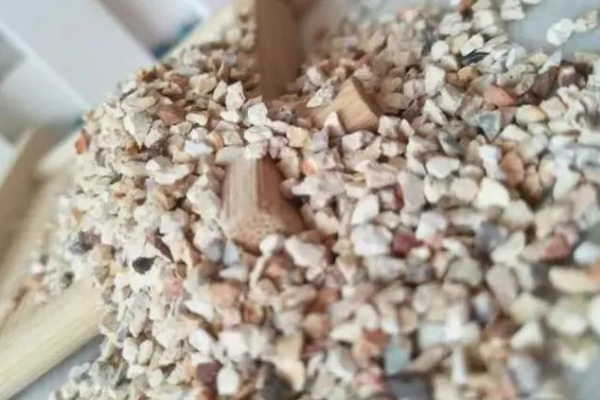
The practice results show that phosphate combined with high alumina brick for waste incineration rotary kiln lining materials.
Phosphate-bonded high alumina bricks are used in cement rotary kiln firing zone, Übergangszone, und Kühlzone. Darunter, it is used in transition belts and cooling belts with longer service life, while it is used in rotary kiln firing belts with bigger damage degrees and relatively shorter service life.
Phosphate combined with high alumina brick in the waste incineration cement rotary kiln for kiln lining materials. Darunter, the transition belt and cooling belt in the large and medium-sized kilns than the general service life of ordinary high alumina brick can be extended by 2 zu 3 mal, in a small kiln can be extended by 3 zu 4 mal. If used in the firing belt can be extended 1 ~ 2 mal. Phosphate combined with wear-resistant bricks for the cooling belt, the wear resistance better, longer service life.
The practice results show that phosphate combined with high alumina brick for waste incineration rotary kiln lining materials. Its service life depends not only on the chemical mineral composition of the brick itself, organizational structure, and external dimensions. And with the kiln structure, masonry technology, operating methods, and the addition of cement raw materials and coal dust and garbage chemical composition, und andere Faktoren.
Phosphate-bonded high alumina bricks used in waste incineration power generation cement rotary kiln mechanical damage, mainly caused by kiln body deformation and thermal expansion. Kiln body deformation is due to the ellipticity of the section of the kiln wheel belt area, the radial deformation of the kiln as well as the opening and stopping of the kiln due to the huge. During ignition and kiln baking, the kiln lining and kiln body will expand.
The kiln section outward expansion is less than the expansion of the phosphate-bonded high alumina brick kiln lining so that the expansion of the hot surface of the phosphate-bonded high alumina brick is hindered, resulting in a large area of the hot surface layer of the blowing and spalling. Gleichzeitig, the movement of garbage and cement materials will also cause mechanical wear on the brick surface.
Phosphate-bonded high alumina brick chemical erosion damage is mainly: silicate, ferrate, and waste incineration ash powder in the K2O and N2O, and alkaline erosion and brick body in the second mullite is also phosphate bonded high alumina brick damage one of the reasons.
Temperatur 800 ℃ ~ 1200 ℃, limestone and clay, materials and ash powder, and lining brick through the surface solids between the mutual diffusion and solid phase reaction. The specific surface area between calcareous and clay is much larger than that between the material, gray powder, and brick liner, and its solid phase reaction speed is much faster than that between the brick liner and the material.
Phosphate-bonded high alumina brick mineral composition is mainly mullite (3Al2O32SiO) und Korund (Al2O3), limestone components and phosphate bonded high alumina brick kiln lining reaction between the main generation of CaOAl2O3 and CaOFe2O3, solid-phase reaction to change the phosphate bonded high alumina brick surface chemical composition and organizational structure.
In the waste incineration cement rotary kiln, due to the high temperature produced by the melt liquid phase infiltration into the kiln lining brick, the phosphate bonded high alumina brick hot surface embrittlement, its thermal shock or mechanical stress, resulting in brick surface cracking damage. Because the kiln waste incineration ash powder and material alkali content is high plus the kiln airflow temperature is too high, increasing the amount of liquid phase, so that the surface of the brick body kiln skin burning flow, triggered by the red kiln off the brick.
When the kiln temperature is too high, the material in the SiO2 and phosphate combined with high alumina brick AI2O3 generation of mullite, the formation of heavy crystals. So that phosphate combined with high alumina brick volume expansion, results in brick body cracking. Appropriate control of kiln temperature and raw material rate values, not only can improve clinker quality, but also improve the service life of the kiln lining.
Kiln airflow and the material temperature difference are too large, in the rotary kiln rotation process, up and down 300% ~ 500 ℃ temperature difference changes. So the phosphate combined with high alumina brick kiln lining to withstand an increase in thermal load, resulting in kiln lining phosphate combined with high alumina brick cracking damage.
1) high-temperature overheating. If the garbage and pulverized coal and other fuel-burning time is too long, the temperature is too high, the liquid phase increases, easy to increase the amount of liquid phase in the kiln resulting in the kiln skin burned flow, resulting in localized drop brick. Generally hang the thickness of the kiln skin control for 150 ~ 200mm thick, relatively stable, and will not be overheating damage.
2) Wärmeschockstabilität. Phosphate bonded high alumina brick kiln by high-temperature secondary sintering, improve the high-temperature performance of phosphate bonded high alumina brick, improve the thermal shock stability, is conducive to hanging a good kiln skin, and protects the kiln lining materials from damage.
PER Refractories ist ein Profi manufacturer of refractory materials, you can contact us at any time to learn more about refractory bricks and refractory castables.
Seit Oktober, Die Preise für Aluminiumoxid sind weiter gestiegen, and China's largest bauxite importer - a…
Erste, Ziegel mit hohem Tonerdegehalt: The Leader In High Temperature Refractories As a leader in high-temperature…
The application of refractory bricks in the kiln immediately endangers the operation rate of the…
Analysis Of The Causes Of Common Quality Problems In Tunnel Kiln Construction And Measures To…
Corundum quality refractory castables are made from corundum to the new jade refractory insulation material…
Analyse feuerfester Aluminium-Silizium-Rohstoffe Prof. Li Yong of the University of Science and…